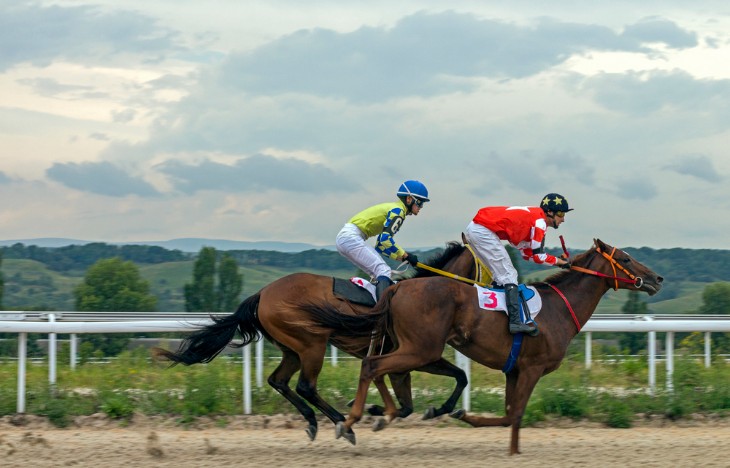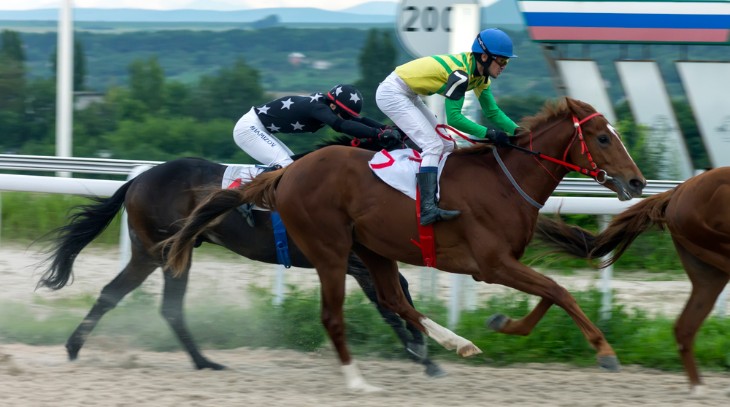- A Historical Overview: The Evolution of Steeplechase Racing
- What Makes Steeplechase Horse Racing Different
- Thrill-of-the-Jump: Exploring Obstacles in Steeplechase Racing
- Jockeys and Horses in Steeplechase Racing
- Training and Preparation: Key Factors for Success in Steeplechase Racing
- Steeplechase Racing Around the World: A Global Phenomenon
- Safety Measures and Regulations in Steeplechase Racing
- In Summary
Steeplechase horse racing, an event that contains speed, ability and stamina is a thrilling experience for both the participants and the watchers. This article tries to give a complete comprehension of steeplechase horse racing by answering the main question "What is steeplechase horse racing?" This will be achieved through an exploration of its history, rules and unique features designed to unveil the exact nature of steeplechasing hence making it accessible to everyone even those unfamiliar with horses.
A Historical Overview: The Evolution of Steeplechase Racing
The history of steeplechase horse racing is very rich and has all manner of things in it. It was established in Ireland during the 18th century. The name of the sport came from races which were initially run from one church’s tower to another. Typically, these tracks went across open fields and had different kinds of obstacles on them creating an exciting race for riders as well as horses.
The initial ever recorded running over steeple took place in 1752 between Mr Edmund Blake and Mr Cornelius O'Callaghan who jumped over natural barriers while traversing countryside. As such, this marked the beginning point for steeplechasing as a sport.
Over time, steeplechase racing has become more popular. It began in Ireland before extending to other parts of the United Kingdom later spreading around other countries globally. The races were transformed from informal countryside events into well-organised ones with specified directions where each runner had to follow certain paths while competing against his or her rival consequently making them fairer and more enjoyable either by a participant or observer.
Throughout the 19th century, many formalised steeplechase races are listed on calendars for horse racing. For example, the Grand National Race in England was held here. There have been big sporting occasions when there are always large crowds.
Currently, this kind of sport is famous all over the world and is respected. It is popular because it combines speed, suppleness, and endurance. There are big steeplechase races in many countries that attract fans and runners from different continents.
Steeplechase horse racing has a rich history with many stories associated with it as an informal gathering of people racing horses in Ireland to a globally recognized sport. The transformation of these races from rural tests to organised ones made them cherished in horse racing.
What Makes Steeplechase Horse Racing Different
This is a unique form of horse racing with excitement and challenges that only it can offer. It has two distinctive features which set it apart from other forms of racing; these are the course and obstacles. In steeplechase races, horses along with their jockeys have to run across a track containing various obstacles like fences, ditches or water jumps. Such races usually require longer distances than flat races and hence could range between 2-4 miles.
Steeplechasing is thrilling due to its variety of obstacles. Horse-rider combinations need to prove themselves over each obstacle. It's not just about climbing those barriers but also landing running outwards so that there is no loss of pace. The stamina required together with the distance covered makes this event very testing both for horses and riders.
Moreover, there is a level of skill that riders must have to compete in the steeplechase. They should be experienced and understand their horse's abilities well; they should know how to approach each jump as well as how to pace the race. Also, these horses are required to be well-schooled enough since they need to be able to jump reliably and bear the strains associated with the game.
In steeplechase racing, the unpredictability of obstacles brings more fun into it; no two races are ever similar. In addition, the condition of the course as well as the weather can affect a race. As a result, horse and rider must remain adaptable to anything.
Challenging courses and obstacles define steeplechase horse racing. It needs skill, stamina, and coordination from both horses and riders. The thrill and unpredictability of obstacles make Steeplechasing racing an exclusive part of the sport-horse world.

Thrill-of-the-Jump: Exploring Obstacles in Steeplechase Racing
The excitement of steeplechase horse racing mostly results from different types of hurdles that horses have to cross. Each kind of hurdle is challenged differently in this type of race. A few common obstacles encountered in steeplechase races are:
- Plain Fences: They are regular barriers found on all steeplechase tracks which horses must clear through jumping over them. Their height can change but generally stand at around 4 1 ⁄ 2 feet. These fences demand good timing coupled with proper coordination between the jockey and his/her mount.
- Open Ditches: Open ditches differ from plain fences in the difficulty levels they present while undergoing a racecourse test for participants (riders). Here there is a fence having a wide ditch on its take-off side; hence horses need more space to cross both the barrier and ditch easily. This comes down as challenging instances where the rider's skill is tested against the horse's jumping ability.
- Water Jumps: Water jumps serve as extra elements of difficulty. Typically, they comprise a fence followed by water. The aspect makes the horse jump over and go into or above the water. Accuracy in timing becomes important when negotiating these hurdles that horses may be afraid of going through.
Jockeys and Horses in Steeplechase Racing
Both jockey and horse play vital roles in steeplechase racing. A successful partnership is based on them both in this difficult sport. Here is how each contributes to a race:
- The Role of Jockeys: In steeplechase racing, jockeys are more than mere riders since they are supposed to have skills along with experience. A jockey ought to know how to guide his/her horse past various barriers at high speeds while avoiding slowing down or even falling; he/she must be able to make impulsive decisions, especially during approaches towards hurdles. They also need to understand their mount's weaknesses and strengths.
- The Role of Horses: In steeplechase racing, horses have to be strong, nimble, and fearless. They should jump well as well as be able to run for long distances without getting tired very quickly. Jumping ability coupled with stamina development forms the basics behind training those types of horses involved in such races as steeplechasing. Consequently, an ideal steeplechase horse would have adaptability characteristics that enable it to face different climatic conditions within different courses.
Training and Preparation: Key Factors for Success in Steeplechase Racing
Preparation for steeplechase racing requires rigorous training. In the sport, horses as well as jockeys must be ready to take up the challenges. Here is why they train and prepare:
- Horse Training: For a horse to do well in steeplechase racing, it needs special training. This incorporates; building their leaping capacities and increasing their stamina and speed. To train such horses, trainers often mimic race conditions. They use mock courses with obstacles designed to familiarise them with different forms of jumps that can happen in races.
- Jockey Preparation: Jockeys also need proper preparation for steeplechase races. This means keeping fit physically and sharpening their riding skills. A good jockey must make quick decisions and readjust strategies during a race. Moreover, he or she must develop a strong bond with a horse they are riding on during the race to make sound choices while racing.
- Planning and Strategy: Planning and strategy are also important aspects of training and preparation. Thus, this involves looking at the layout of the course aside from understanding the ones competing against you in this game. Trainers together with jockeys come up with a strategy for a given race whereby they may decide how to approach each obstacle and pace themselves throughout the race.

Steeplechase Racing Around the World: A Global Phenomenon
Steeplechase racing is not just a sport loved in its birthplace of Ireland and the UK. It has become a global phenomenon. Countries around the world now host steeplechase races, each adding its unique touch to the sport.
In the United Kingdom, steeplechase racing is a major part of the horse racing calendar. The Grand National, held at Aintree Racecourse, is one of the most famous steeplechase races in the world. It attracts horses, jockeys, and spectators from various countries. The race is known for its challenging course and has a rich history that adds to its prestige.
The United States also has a strong steeplechase racing scene. Races like the American Grand National and the Maryland Hunt Cup are popular events. American steeplechase races often have a more relaxed atmosphere compared to their UK counterparts. They are social events where families and friends gather to enjoy the race and the day out.
In other parts of the world, steeplechase racing is gaining popularity. Countries like Australia, Japan, and France have their steeplechase races. These events are growing in stature and attracting international interest. The Nakayama Grand Jump in Japan, for example, is one of the richest steeplechase races in the world.
Each country brings its traditions and style to steeplechase racing. This diversity adds to the richness of the sport. Whether it's the historic tracks of the UK, the festive atmosphere of US races, or the growing scenes in other countries, steeplechase racing has a universal appeal. It brings together people from all over the world to enjoy the thrill and excitement of the race.
Safety Measures and Regulations in Steeplechase Racing
Safety is a top priority in steeplechase racing, for both the horses and the riders. Various measures and regulations are in place to ensure that the sport is as safe as possible. Here's how safety is maintained in steeplechase racing:
- Course Design and Maintenance: The design of the course and the obstacles are carefully considered to make them as safe as possible. This includes ensuring that the jumps are built to standard specifications and are well-maintained. The ground is also kept in good condition to reduce the risk of injury. Regular inspections are carried out to ensure the course is safe for racing.
- Protective Gear for Jockeys and Horses: Jockeys are required to wear protective gear. This includes a helmet, body protector, and other safety equipment. The horses also wear protective gear, such as boots and sometimes protective headgear. This gear helps reduce the risk of injury in case of a fall or accident.
- Strict Rules and Regulations: Steeplechase racing is governed by strict rules and regulations. These cover everything from the qualifications of the horses and jockeys to the conduct of the race. The rules ensure that the races are fair and that safety is prioritised. There are also regulations in place for the care and treatment of the horses, both before and after the race.
- Veterinary Care: Veterinary care is an important part of steeplechase racing. Veterinarians are present at races to provide immediate care if needed. The horses are also regularly checked to ensure they are fit and healthy to race. This helps prevent injuries and ensures the well-being of the horses.
In Summary
Steeplechase horse racing is a sport that captivates with its blend of speed, skill, and daring. From its historical origins to its current global presence, steeplechase racing offers a unique and thrilling experience. Whether you are a seasoned enthusiast or a newcomer to the world of horse racing, understanding the intricacies of steeplechase racing can enhance your appreciation of this dynamic sport.
As we've explored the question, "What is steeplechase horse racing?" It's clear that this sport is much more than just a race – it's a celebration of the extraordinary capabilities of both horse and rider.






